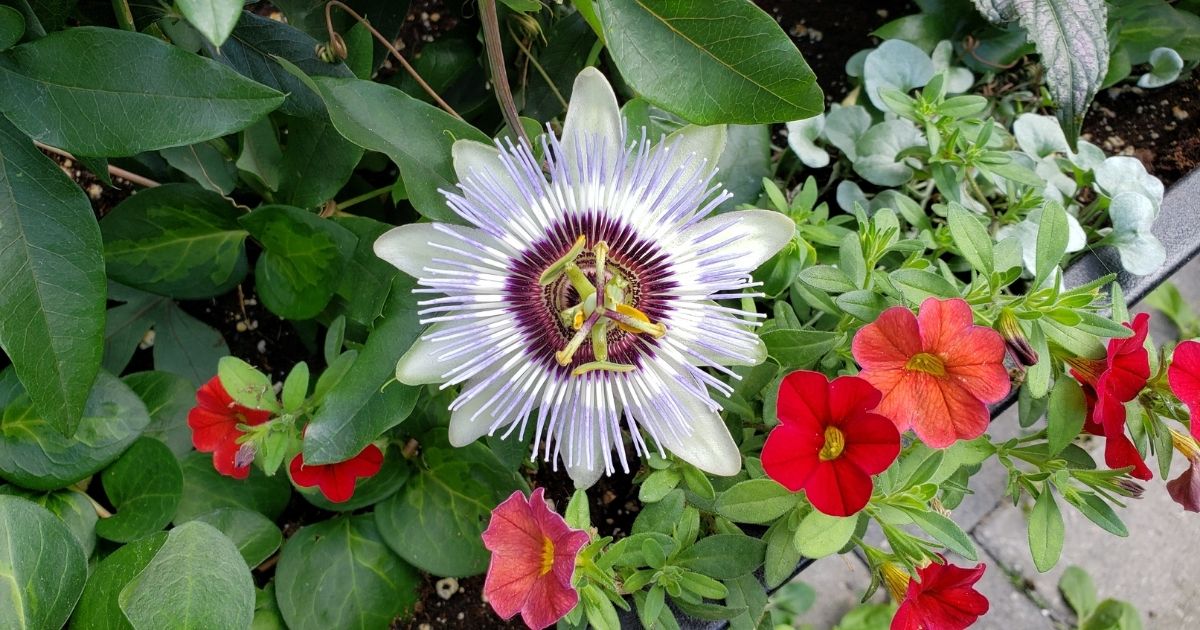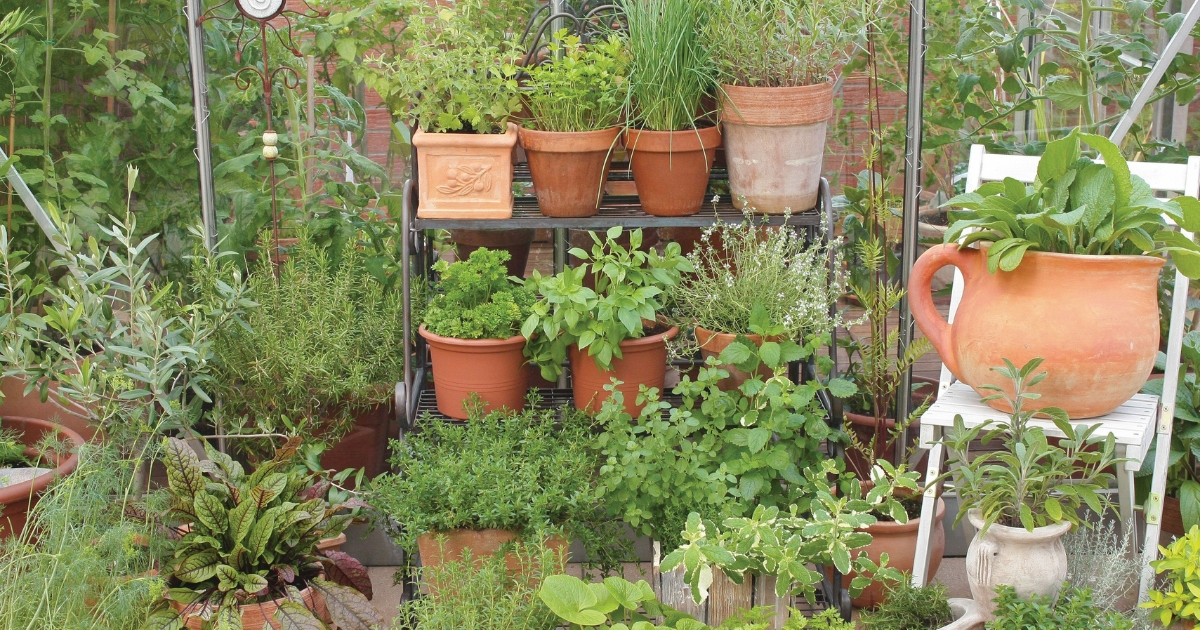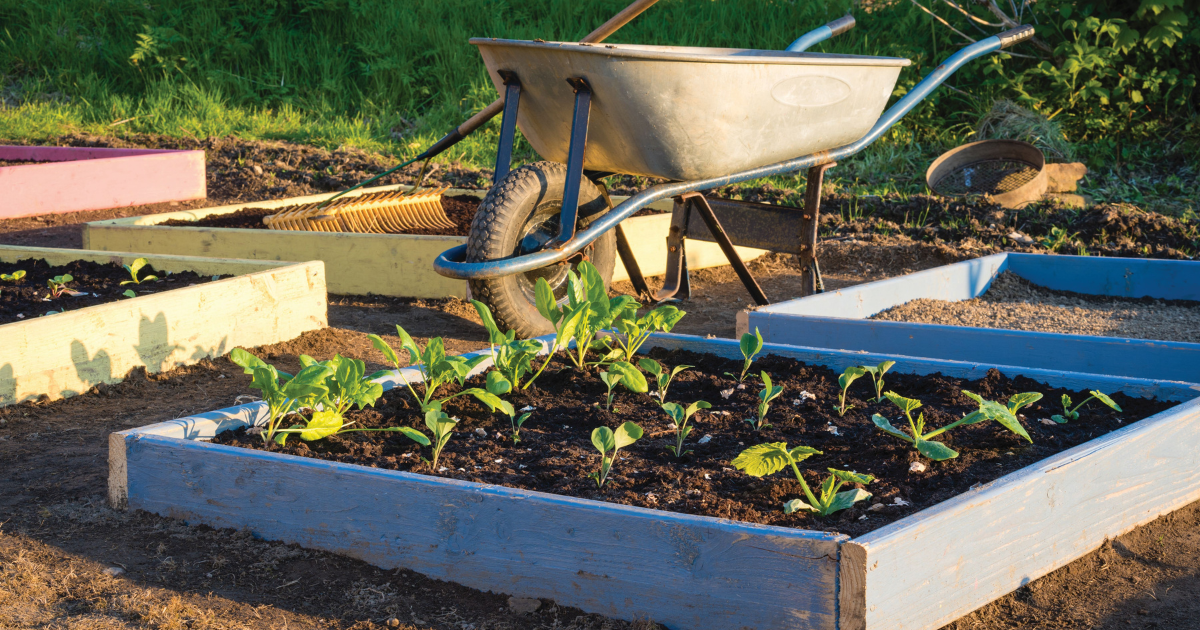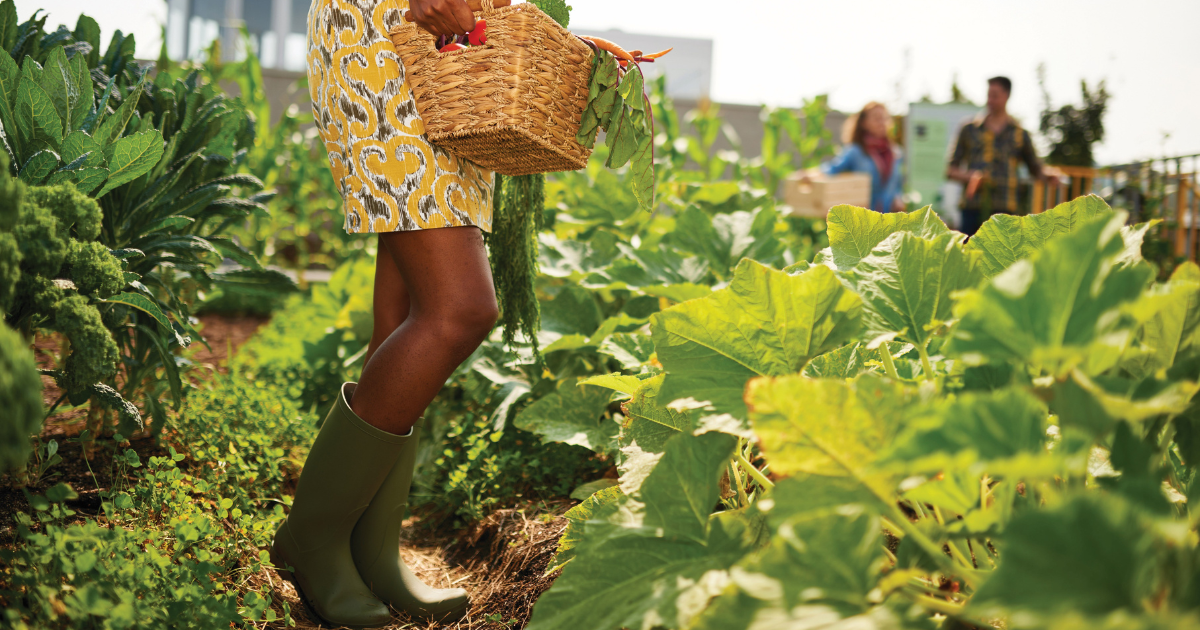If we didn’t share our trade secrets on garden flops and successes, where would we be? Sharing gardening knowledge is generational, historical, scientific and just plain nice. I decided to canvas the Harrowsmith team, our social media followers, friends and family members to see how they’ve grown. Here are their top tops.
Say Yes to Sweet Grass and Lava Hot Peppers

If your neighbour offers you a bundle of sweet grass, say yes! It’s very easy to braid (while green and pliable) and releases a beautiful, natural aroma that beats any Glade plug-in! Anthoxanthum nitens (sweet grass) goes under a few aliases like manna grass, Mary’s grass, vanilla grass and across the pond as holy grass. Apparently Polish vodka distillers refer to it as bison grass. When I lived in Vancouver, my housemate, a Blackfoot from Alberta, schooled me on the sacred grass and smudging (a spiritual cleansing ceremony whereby the grass is burned). The distinct and unforgettable smell of burning sweet grass whisks me back to my bohemian days with Richard on the west coast in a second.
Also–if you want to grow a hot pepper that is the equivalent of eating a bonfire, try Proven Winners Fire Away™ Hot and Heavy. You can count on revving up your salsa in 65 to 72 days from transplant. Ironically, this hot pepper is totally heat resistant, though you might not be! It loves the sun and you can harvest the little embers until first frost.
Jules Torti, Lion’s Head, Ontario
Make an Architectural Statement

Hostas, for their versatility, colour and size continue to rank at the top of my list of favourite perennials. Large-leafed hostas like Sieboldiana, also known as Elegans, is a no-brainer slug-resistant dynamo to plant. Its giant blue leaves turn dark green mid summer and their leaves span 60” W and 30” H. I like to combine it with ferns and variegated hostas like Francis William for their contrast and interest. Other giant favourites that make an architectural statement in a spacious garden are Gentle Giant and Empress Wu with a wow factor of up to 47” in height.
It all starts with the right depth and quality of soil though which is a must as a starting point. Combine that with the right amount of light exposure and water and you’ll have show-stopping hostas for years!
Yolanda Thornton, Hamilton, Ontario
Plant Tomatoes Sideways

My tip would be to plant tomatoes sideways and put as much stalk as you can in the ground. You’ll get a better crop of tomatoes and a huge plant!
Teresa Martin, Newmarket, Ontario
Consider Straw Bale Gardening

I tried my hand at straw bale gardening, though I used hay bales, which is considered risky, what with all those seeds and all. But, it was fine. In fact, it was much better than fine, it was a real success. I ate well all summer through the fall, learned a lot, didn’t kill my back and knees weeding, and it was wildly less expensive than building raised beds!
Signe Langford, Port Hope, Ontario
Use Self-Watering Planters

My tiny north-facing urban balcony is blessed with a mere hour of direct sunlight. Surprisingly, even my most sun-loving plants flourish in self-watering rail planters. My trailing petunias runneth over, as do the herbs, Scotch bonnets and mini cherry tomatoes. My guess is that it has a lot to do with the breezy exposure and sunlight up on the railing coupled with a little shelter. Good air circulation, like a gentle breeze, helps plants thrive. My go-to rail planters are the adjustable faux terracotta variety available at Lee Valley Tools and Home Hardware. The arms, built-in brace and levelling feature make for easy adjustments to fit my skinny one-inch railings. The deep pot and integrated reservoir encourage root growth while deterring root rot, so I don’t have to water as frequently. This also means I can sneak away for extended camping trips without worrying about the soil drying out!
Jennifer Krissilas, Toronto, Ontario
Plant Passion Flowers

My passion flower looked like a green leafy mess! The plastic tag promised purple and azure blossoms from the strangled fronds. We planted two varieties, not expecting much from a balcony garden with hurricane-force winds. However, we were pleasantly surprised by the profusion of flowers all season long! The blossoms, which we likened to satellites, were still blooming in October! We highly recommend these plants, even on northern exposures.
Dax Torti, Toronto, Ontario
Get Creative to Keep Away Elk
While most people would assume that the mountain town of Banff is a pretty ideal slice of heaven, in addition to the extended winter wonderland, would-be gardeners have to wrestle with the relentless destruction of the “neighbourhood gang.” While they may not look like your typical hoodlums, the results of their vandalism can be equally disturbing. Averaging between 225-315 kg (500-700 lbs) and standing 6 to 9 feet at their full stature, ungulates, more specifically the “Wapiti” or Rocky Mountain Elk are known to laugh (or snort) at the gardening efforts of locals. Their smaller-sized cousins (white-tailed and mule deer) also like to join the party at times and enjoy feasting on fresh blossoms and brightly coloured blooms. Sometimes within 24 hours of a much-anticipated bloom! Cages are effective, but I struggle with the aesthetic of a “flower jail,” and our open-concept yard backs onto a wildlife corridor means fences are frowned upon by local conservationists. After multiple battles over the years, a fellow gardener encouraged me to try marigolds, promising that they were natural repellents for the deer and elk. Apparently, these fellows are not as discriminating in their food choices. A former high school friend turned ocean side-homesteader in Bella Bella, BC, shared a home recipe using cayenne to keep the culprits away. Although her local neighbourhood gang is a band of feisty sea otters. The prediction for my next garden season? Things are going to get spicy–Ole!
Kiley Torti, Banff, Alberta

Enjoy Summer Blooms Over & Over Again

I bought a blue hydrangea which was supposed to be an annual, enjoyed it on the deck and then planted it last fall.
I was happy that it came up blue once again.
Wendy Carter, Brantford, Ontario
Go for the Good Poop
This year I harvested my best crop of garlic yet — fat and healthy and not a single punky bulb in the lot — thanks I believe to the manure I bought from a local single mom organic farmer who raises everything ranging from chickens, ducks and rabbits through to goats, sheep and cows. It was still rather fresh so I let it compost for a year before digging it in and planting garlic last fall. A winter’s bounty. And the scapes made delicious pesto.
Tried with little success to grow ground cherries after discovering them at our farmers market a few years ago, but then they popped up on their own, I assume from seeds in my compost. Now the problem is to keep them under control. Last year they grew into huge bushy plants, taking over my garden and producing prolifically all summer. I was still picking fruit at season’s end, as were neighbours and squirrels. But I learned my lesson — this year I left just a few of the young volunteers for another crop and kept yanking out the rest. Unfortunately, they were slow to ripen and still laden with fruit when frost hit last night (mid-October). Lesson two: remember to cover late plants!
P.S. Ground cherries are not cherries at all but small marble-size berries that drop to the ground when ripe, hence the name. Pull off the papery husk and pop it into your mouth. Delectable! Mouth-puckering when green, savoury-sweet when ripe. Granny Smith apple cum tomatillo?
Donna Dilschneider, Lion’s Head, Ontario
Jules Torti’s work has been published in The Vancouver Sun, The Globe & Mail, travelife, Canadian Running and Coast Mountain Culture. With experiences as a canoe outtripper, outdoor educator, colouring book illustrator and freelancer, she is thrilled to be able to curate, write and read about the very best things in life.











